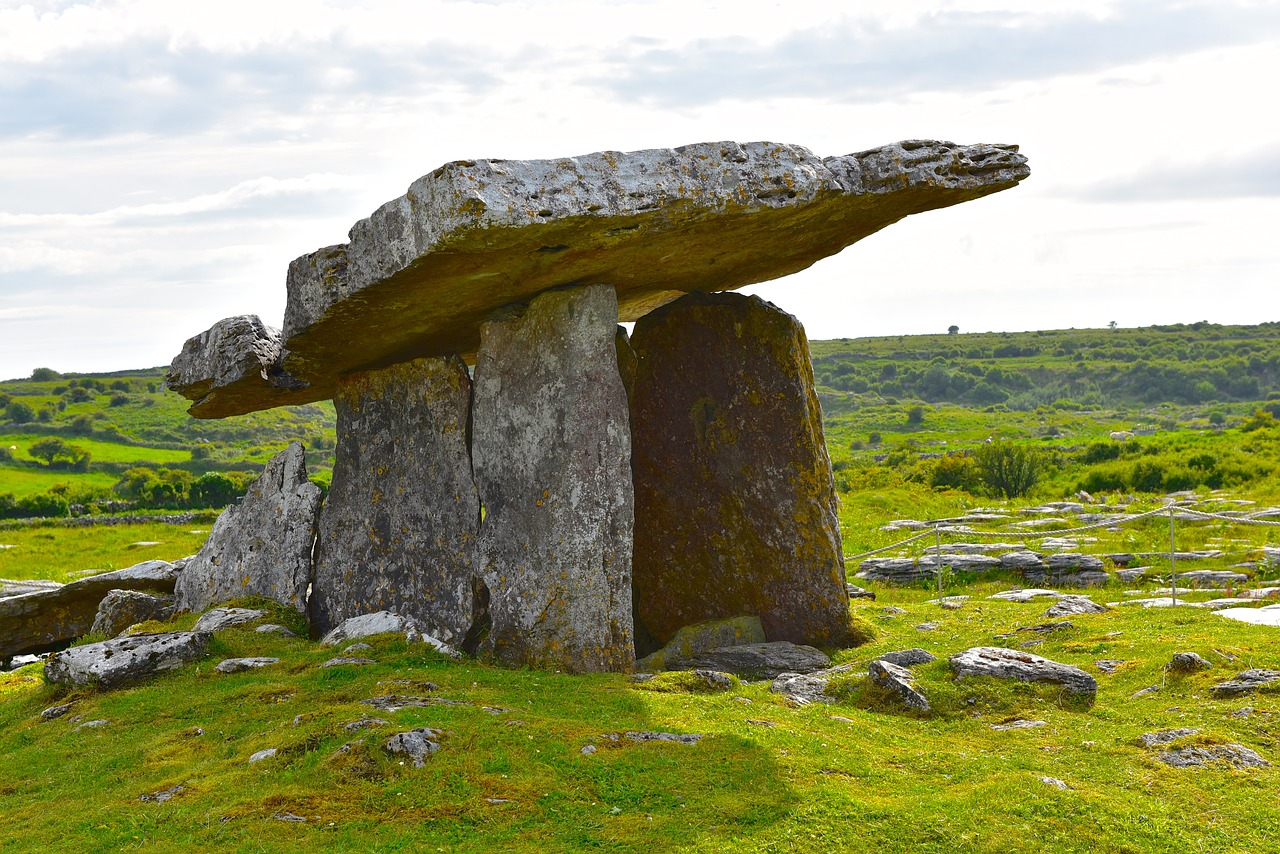Ireland – home of spectacular landscapes and fascinating historical sites
I love Irish culture and countryside. There is much to see and do on the beautiful island of Ireland! Sometimes planning a trip to Ireland can be a daunting task – what should I not miss? So many beautiful sights, but everyone has their own favorite places.
Here is my 10 top things that I would recommend to see in Ireland. No visit to Ireland would be complete without visiting at least one of these 10 places.
Top 10 places to see in Ireland
- Cliffs of Moher
- Giants Causeway
- Poulnabrone Dolmen
- Newgrange
- Dun Aengus
- Killarney and Ring of Kerry
- Rock of Cashel
- Bunratty Castle and Folk Park
- Dublin City
- Glendalough
#1 Cliffs of Moher
The Cliffs of Moher are a must-see if you are visiting the West of Ireland. The sheer drop of around 700 feet from a comparatively flat
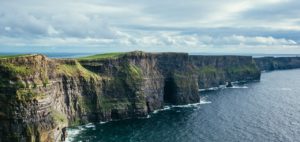
Cliffs of Moher
meadow down to the Atlantic is simply breathtaking.
There’s a visitor centre just south of the highest peak; O’Brien’s Tower was built in 1835 by Cornelius O’Brien, a descendant of Brian Boru, the High King of Ireland. Even back then it was used as an observation point for visitors. This is where you’ll get the best views of the cliffs. From here you can also see the Aran Islands, Galway Bay, the Twelve Pins and the Maum Turk Mountains in Connemara.
If you are afraid of heights, you can always view the cliffs from the sea below. Boat trips depart from Liscannor and Doolin. Want to stay close to Cliffs of Moher?
#2 Giants Causeway
Known to the Irish as the 8th wonder of the world, this is Northern Ireland’s most famous landmark. A jagged promontory of neatly packed columns of hexagonal rocks created some 60 million years ago by a flow of basaltic lava.
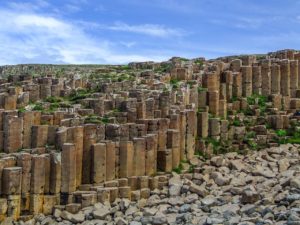
Giants Causeway
The hexagonal columns were formed after a series of volcanic explosions forced a basaltic flow of lava up onto the surface of the earth. When it eventually cooled and contracted it formed into the curious shaped columns that we see today. The individual columns are so perfectly fitted together that you can only see the tiniest of cracks between them.
The causeway looks like a field full of perfectly geometrical giant stepping-stones, hence the name “Giants Causeway”. It’s a truly spectacular site.
Further down the coast, the stunning Carrick-a-Rede Rope Bridge spans a gaping chasm between the coast and a small island used by fishermen. The terrifying eighty foot drop can be crossed via the swinging bridge – not for the faint hearted!
#3 Poulnabrone Dolmen
Poulnabrone Dolmen is a portal tomb located in Co. Clare. It is one of the most famous dolmens in Ireland. The large capstone rises up
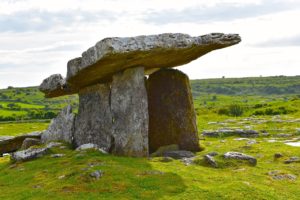
Poulnabrone Dolmen
from the limestone bedrock of the Burren, supported by two portal stones that are 1.8 meters high. The people that were buried in Poulnabrone Dolmen were Neolithic farmers. The radiocarbon dates from the bones produced an age of 3800 to 3200 B.C. The name Poulnabrone literally means ‘The hole of the sorrows’.
Excavations done in 1986 and 1988 by Ann Lynch produced many interesting finds, in addition to replacing two of the broken orthistat stones. This assures that Poulnabrone will remain a dominant part of the Irish landscape for many years to come.
#4 Newgrange
This is a Pagan burial ground that was built around 3200 BC. It covers an area of over one acre and is surrounded by 97 kerbstones. Every year hundreds of visitors come here to witness the spectacular winter and summer solstices.
Inside there is a curious window shaped opening called a roof box. This strange orifice was quite a find for those who uneaerthed it.
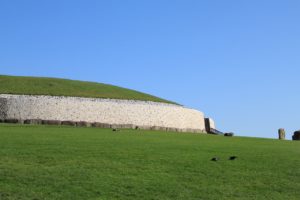
Newgrange, Ireland
When they found out what it was for, they were even more shocked. This is an ancient time-telling device that they believe was bulit even before the Pyramids. The purpose of the box is to allow sunlight to penetrate the chamber on the shortest days of the year, around December 21 – the winter solstice.
Every year between the 19th and 23rd of December a thin beam of light penetrates the box and reaches the floor of the indoor chamber. The light gradually extends all the way to the rear of the passage.
As the sun rises higher in the sky the whole indoor chamber becomes dramatically lit up. It’s spectacular. The whole event lasts for around 17/18 minuetes. It takes place in the morning every year at roughly the same time – between 8:58 am and 9:15 am.
The accuracy of Newgrange as a time-telling device is quite astonishing. It was built 500 years before the Pyramids of Egypt and over 1,000 years before Sonehenge in England. The people who built it clearly used it as a time reference to mark the begining of the new year or the end of the old. Want to stay close to Newgrange?
#5 Dun Aengus
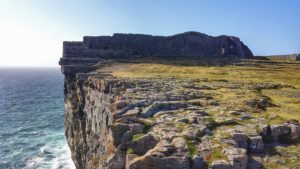
By Jal74 (Own work) [CC BY-SA 4.0], via Wikimedia Commons
These are Islands rich in the language, culture and heritage of Ireland and also unique in their geology and archaeology. They’re a fine example of Celtic and early Christian heritage.
The Aran Islands are desolate, isolated and stunningly beautiful. Arriving on the islands for the first time you’ll feel like you’ve just stepped in time to a place untouched by modern civilization.
Dun Aengus is one of the Aran Island’s finest treasures. It’s a stone fort on the very western edge of Europe; a subject of much romantic speculation on one of the most romantic spots in Ireland.
Dun Aengus has been described by many as one of the most magnificent of its kind in Europe.
It’s made up of three massive concentric semicircles covering an area of 11 acres. It has three enclosed spaces. From the innermost you’ll get the most amazing views Inishmore and the Connemara coastline.
#6 Killarney and Ring of Kerry
The world famous Ring of Kerry is a coast road located along the shores of the Iveragh Peninsula. The Ring of Kerry begins at the town
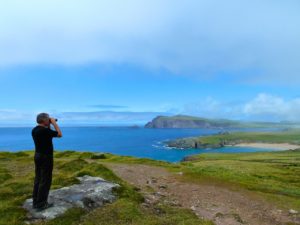
Killarney and Ring of Kerry
of Kenmare passing through Cahirciveen along the headlands of the peninsula. The route then returns alongs the peninsula with views of Kells Bay and the beautiful Dingle Bay passing through the towns of Glenbeigh, Killorglin and Killarney. In the mountain range along the Iveragh Peninsula are The MacGillycuddy Reeks and Carrantuohill, Ireland’s highest mountain.
You could cover the Ring of Kerry in a day, but you would need two or even three days if you wanted to take in some of the more rural and less travelled areas such as Valencia Island and the Gael Tacht area around Portmagee and Ballinskelligs or the mountainous interior of the peninsula, that is known as Ireland’s Highlands. The roads here, particularly the Bealach Oisin Pass and Ballaghbeama Pass of the interior are fabulous coach free routes ideal for quiet drives or cycling tours.
#7 Rock of Cashel
Rising above the city of Cashel in central Ireland, the Rock of Cashel is one of Ireland’s most impressive archeological sites. The site has
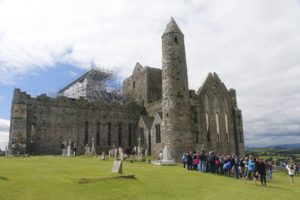
Rock of Cashel
links to the 4th century and many parts of the site date to the 10th century. In the 4th century the king of Munster choose the defendable high ground of The Rock as a fortress to exert his power. A legend says that when the King met St. Patrick and was converted, St. Patrick accidently stabbed the king in the foot with his staff. St. Patrick didn’t see the wound and the king said nothing. Later, when St. Patrick saw the wound, he asked why the king had remained silent. The king replied that he thought it was part of some Christian initiation relating to the crucifixion.
The Rock eventually fell to the O’Briens, and they gave The Rock to the church to prevent another clan from gaining control of it. The church used it until 1647, when the Rock fell to a Oliver Cromwell and his followers. The Cromwellians burned and sacked the fort/church. The Rock was last used as a place of worship in the early part of the 18th century.
Now the ruins overlook the city of Cashel and provide a wonderful view into historical Ireland. Want to stay close to Rock of Cashel?
#8 Bunratty Castle and Folk Park
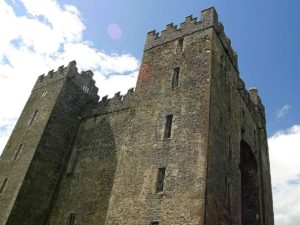
Bunratty Castle
Bunratty Castle is one of the most popular places to visit in the southwest, as it is the most complete and authentic medieval castle in
Ireland. Built in 1425, and plundered on many occasions, it was authentically restored in 1954 to its former medieval splendour, with furnishings and tapestries capturing the mood and style of the times.
Within its grounds is Bunratty Folk Park where 19th century village and rural life are recreated. Traditional crafts are carried out in their natural setting, and during the summer period visitors can also see characters/animators depicting 19th century life.
Want to stay close to Bunratty Castle and Folk Park?
#9 Dublin City
Even if you have just one day in Dublin, make sure not to miss any of the Top Ten Sights! Most are within easy reach of the city center or
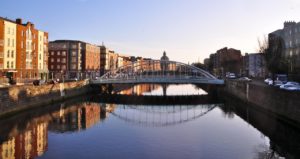
Dublin, City
will be part of a bus tour. Which ever way of transport you decide upon – you are certain to find further attractions on the way.
Dublin is home to a huge variety of fantastic museums and galleries and also more contemporary exhibitions, means that there is something to suit all tastes and ages. The national museum and national gallery work in perfect harmony together with the likes of the Museum of Modern Art and the Photography archive in Temple Bar. There exists a perfect mix of state run museums and galleries as well as new private exhibition centers opening up all the time. Find a place to stay in Dublin.
While staying in Dublin you should definitely visit one of the 10 most popular attractions:
- Guinness Storehouse
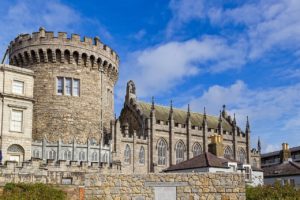
Dublin Castle
- Trinity College Dublin and The Book of Kells
- Dublinia
- Temple Bar
- Kilmainham Gaol
- The Old Jameson Distillery
- Dublin Castle
- National Gallery of Ireland
- Stephen’s Green
- Christchurch Cathedral
#10 Glendalough
Glendalough, known as “the valley of the two lakes” or the “city of the seven churches” is an idyllic part of the country. It’s instantly recognisable by the round tower and picturesque lakes. It’s undoubtedly one of the most enduring images of Wicklow.
It’s also one of the most important monastic ruins in Ireland. It was founded by St. Kevin over fourteen centuries ago, when the valley was part of Ireland’s green age.
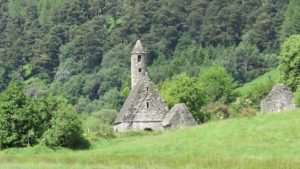
Glendalough
Glendalough’s two lakes were formed thousands of years ago, just after the ice age. Massive deposits of earth were spread across the valley in the area where the famous round tower now exists. Water coming down from the mountains eventually formed into a large lake. A divide was created right in the centre by alluvial deposits coming from the Pollanass River. This created the upper and lower lakes. The upper lake is the largest and deepest of the two lakes.
The Buildings eventually fell into decay and it wasn’t until 600 years later (in 1878) that reconstruction finally began. Further work has been carried out all throughout the 20th century.
Modern day Glendalough is an area of exceptional natural beauty, with extensive woodland and a comprehensive network of walk-ways that are continually being improved.

